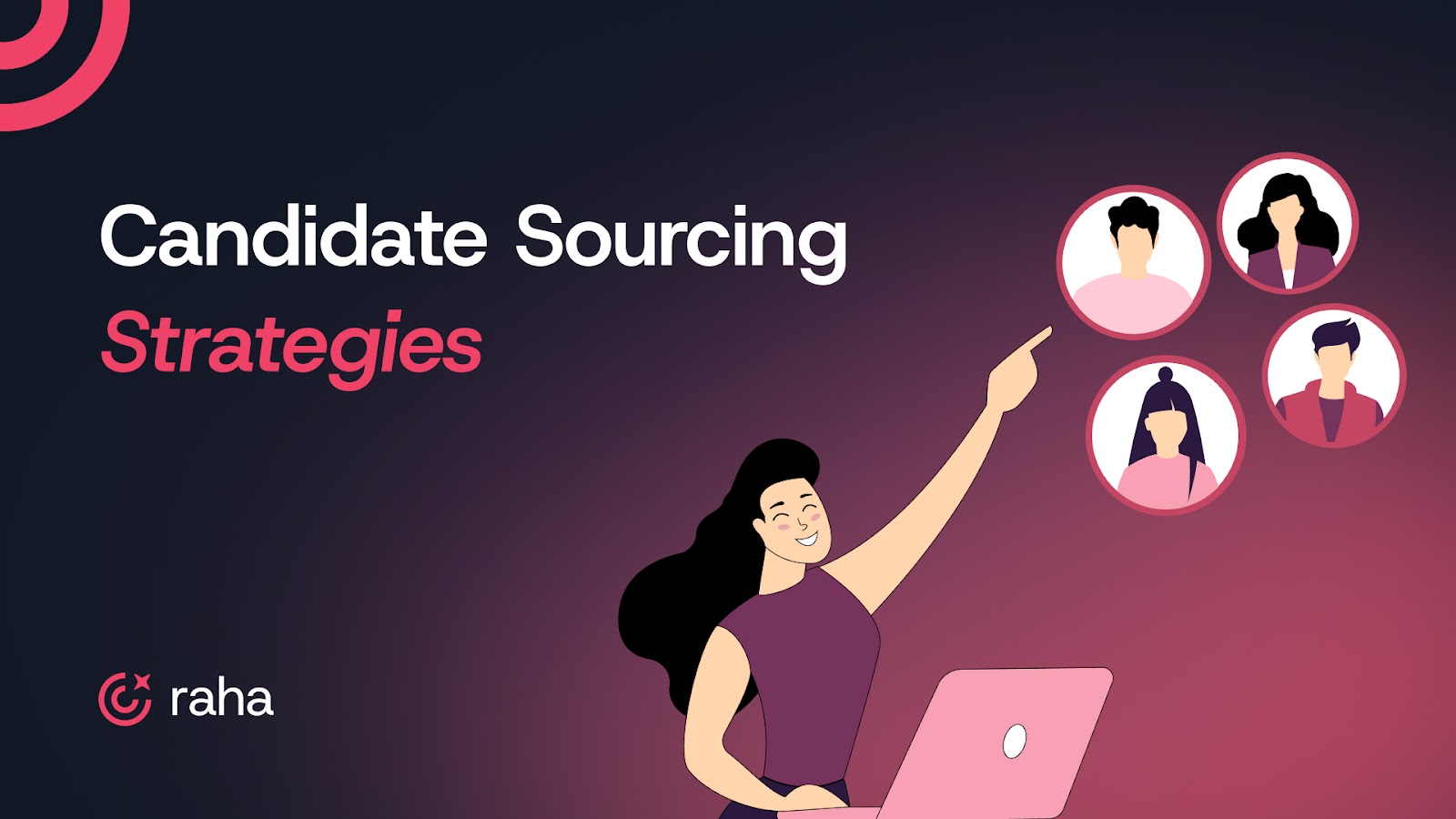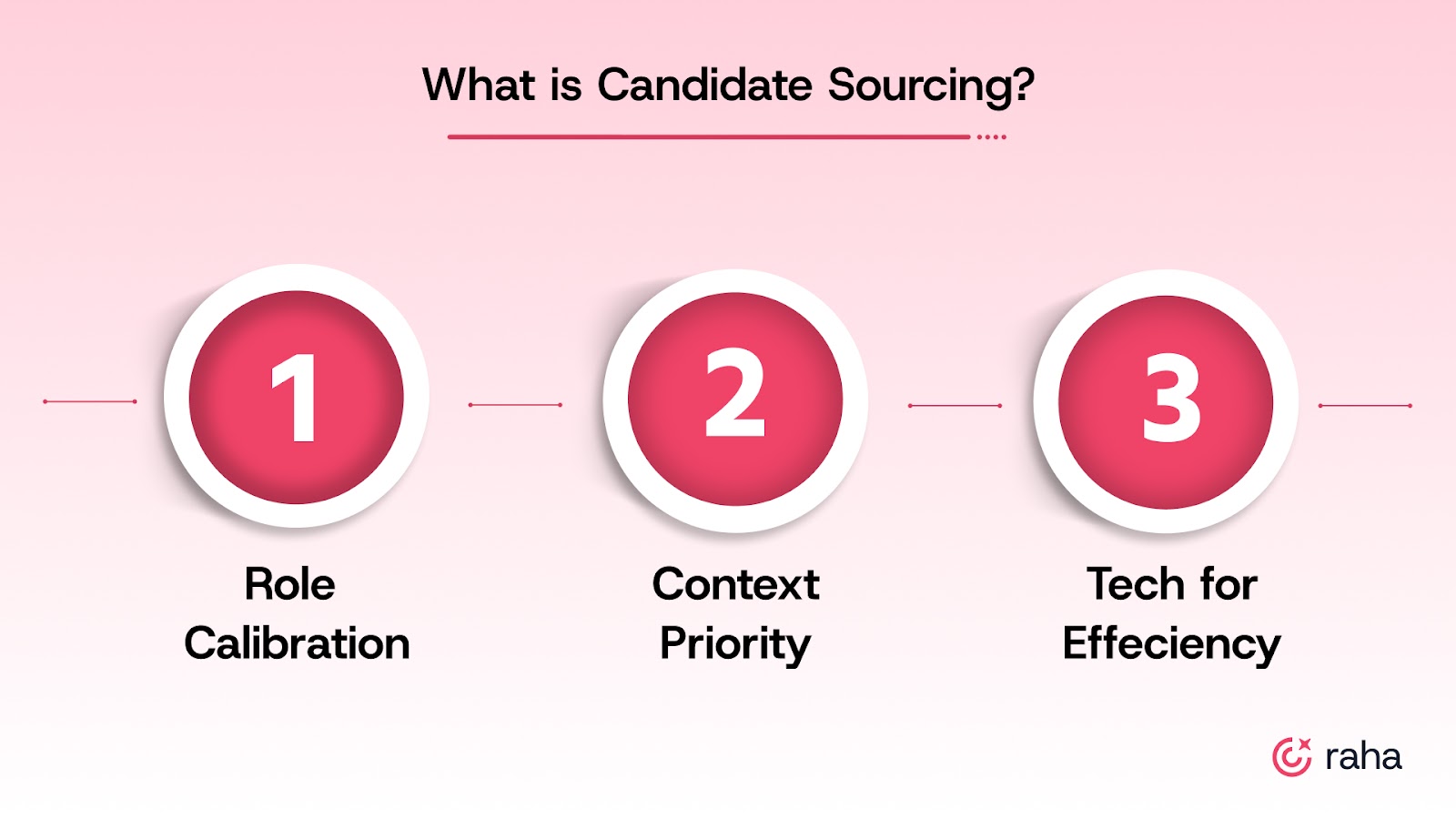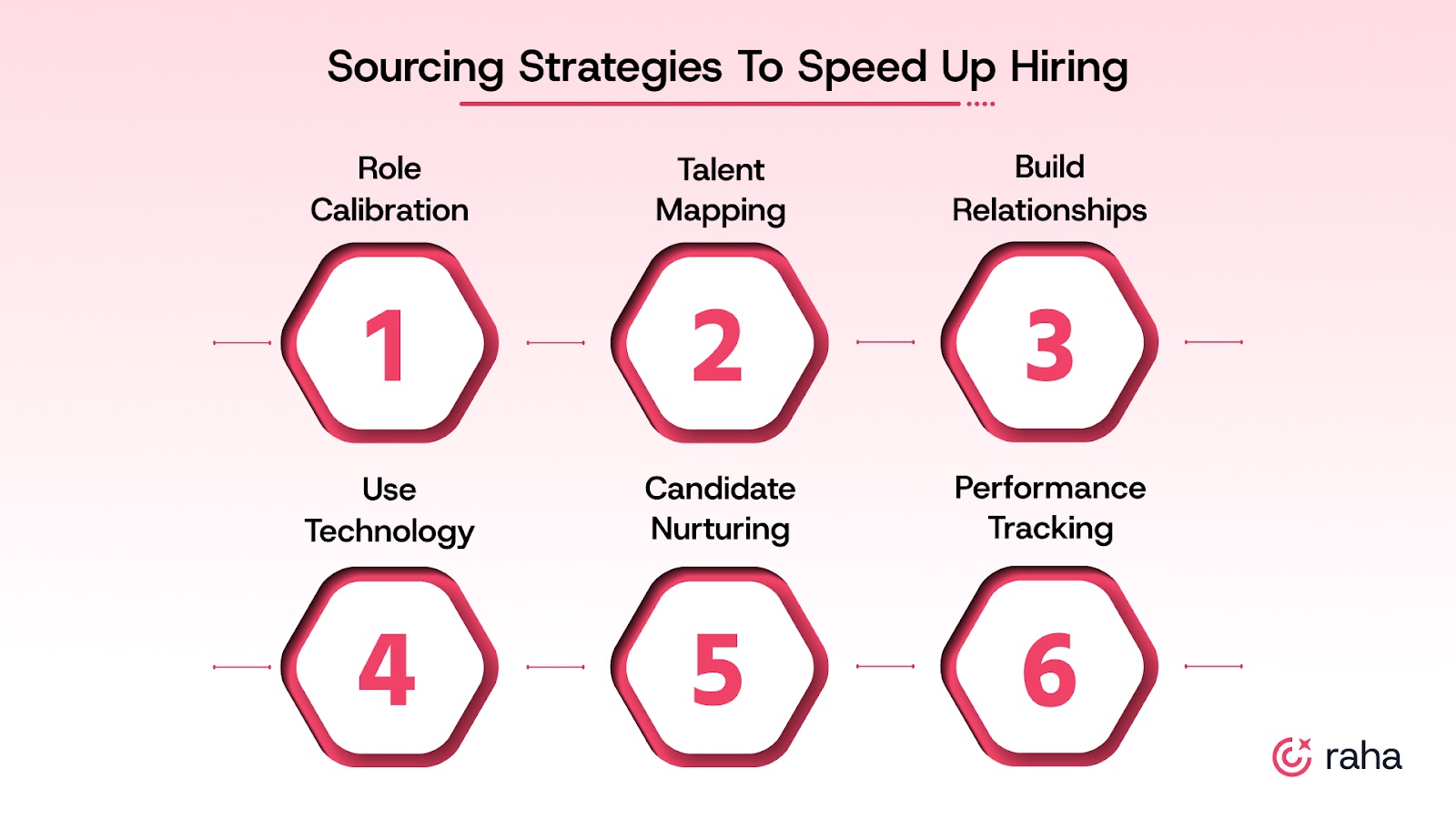
Sourcing drives hiring — or breaks it.
If you’re not getting the right people into the funnel early, no amount of great interviews or employer branding will fix it. Weak sourcing leads to weak pipelines, misaligned candidates, slow cycles, and roles that reopen three months later.
The real issue as you know isn’t a lack of tools. It’s a lack of consistent, focused sourcing habits. Too often, sourcing becomes an afterthought, squeezed in between calls and pulled together based on surface-level searches instead of clear signals.
To fix it, you need to build better workflows. You need to start before roles open, work closely with your hiring managers, and use tech to scale without losing context.
This guide walks through six sourcing strategies that experienced TA teams rely on to increase pipeline quality, reduce misalignment, and keep hiring moving in the right direction.
Key Takeaways:
- Sourcing is not recruiting. It’s a separate, upstream process that builds your pipeline before roles even open.
- If the role isn’t clear, sourcing fails. You’ll chase the wrong profiles and waste time.
- Good sourcing focuses on signal, not volume. Go where the right talent actually is.
- Generic outreach gets ignored. Personalization is non-negotiable if you want replies.
- If you’re not tracking what converts, you’re flying blind. Measure what leads to hires, not just clicks.
What is Candidate Sourcing?

Candidate sourcing is the frontline of hiring. It’s the process of proactively identifying, researching, and engaging talent before they apply. While recruiting kicks in when someone’s already in your funnel, sourcing is how you fill that funnel with the right people in the first place.
Here’s what experienced teams focus on:
- Tight role calibration. Before you even open a sourcing tab, sit down and agree on what “good” looks like. Review example profiles and push for clarity on must-haves vs. stretch skills.
- Context over contact lists. You’re trying to get replies from the right people. That means researching work history, side projects, GitHub commits, and writing outreach that actually reflects that.
- Tech to speed things up. Experienced TAs are using AI to perform surface matches and write intros. So, while tools help you move faster and knowing why someone’s a fit still comes down to you.
Why this matters:
- Great sourcing shortens time-to-fill without compromising on fit.
- It reduces ghosting because you start with stronger, better-matched candidates.
- It puts your team in control of hiring timelines instead of constantly playing catch-up.
Still, sourcing only works when it’s treated as its own discipline, not just a subtask of recruiting. Let’s get clear on the difference.
Sourcing vs. Recruiting: What’s the Difference?
A lot of teams still treat sourcing and recruiting like synonyms. But anyone who’s worked both sides knows: they require different skills, tools, and workflows.
Here’s how they actually play out on the ground:
How Candidate Sourcing Should Play Out Day-to-Day
Sourcing is a dedicated rhythm that feeds your pipeline before recruiting even begins. It’s its own process, with its own cadence, tools, and focus.
Here’s what it should look like:
- Monday: Sync with hiring managers. Clarify what the role really needs, review example profiles, and align on key skills and trade-offs.
- Tuesday: Start building your list. Pull from your CRM, past candidates, and targeted platforms. Focus on signal over surface-level keywords.
- Wednesday: Begin outreach. Personalize each message—reference their work, speak to their goals, and make it about fit, not just the role.
- Thursday: Follow up and triage. Track responses, re-engage warm leads, and tag prospects for future roles where relevant.
- Friday: Review and adjust. Check which sources, messages, or profiles are getting traction. Refine your approach before the next week kicks off.
Done right, this rhythm keeps your sourcing engine running: steady, targeted, and always one step ahead of the req. Now let’s get into the strategies that make it actually work.
6 Sourcing Strategies That Speed Up Hiring
Sourcing breaks down when recruiters are asked to handle everything. They’re then spread too thin, and it’s treated like a side task. But when sourcing gets the focus it deserves, you build real pipelines.
These five strategies are what top teams use to keep pipelines warm and hiring goals on track.

1. Calibrate the Role Before You Source
Most sourcing fails because the target isn’t clear. If your hiring manager can’t tell you what “good” looks like, no Boolean string will save you. You’ll waste hours chasing profiles that were never aligned in the first place.
What actually works:
- Review 5–6 profiles together and ask: “Closer or farther?”
- Clarify must-haves vs. stretch skills. Push for trade-offs.
- Write down why the role exists and how success will be measured.
What it improves:
- Fewer screening misfires
- Faster alignment with hiring managers
- Stronger, more relevant top-of-funnel
2. Go Where the Talent Actually Is
The best-fit candidates are busy building, shipping, and sharing in communities you’re not tapping into. If you're stuck sourcing from the same crowded channels, your pipeline will reflect it.
What actually works:
- Use Stack Overflow, Dribbble, Reddit, or Discord, depending on the function.
- Don’t pitch cold. Reply to threads, comment on projects, and show up as part of the space.
- Build relationships in professional associations or meetups.
What it improves:
- Stronger pipelines for hard-to-fill roles
- Higher reply rates
- More passive talent engaged early
3. Build Relationships, Not Just Fill Positions
If your message could be sent to 100 other candidates with no edits, you’re doing it wrong. Candidates can tell when they’re just a line in your CRM. If you want a response, you need to make the message feel like it could only have been sent to them.
What actually works:
- Reference something specific from their work or posts.
- Lead with what’s in it for them, not just your role.
- Segment messaging for active vs. passive candidates.
Instead of: “Job opportunity at [Company Name].”
Try: “Your [specific project] caught my eye—want to hear about something similar we’re working on?”
What it improves:
- Higher response and interest rates
- Better early-stage conversations
- Lower candidate ghosting
4. Use Tech, But Don’t Lose the Human Signal
AI should extend your reach, not replace your judgment. Tools that spray outreach without filters or context create noise, not hires. Smart sourcing uses AI to amplify intent, not automate laziness.
What actually works:
- Use AI for the heavy lifting: surface matches, filter based on skills, and flag overlaps.
- Set up platform alerts for new matches instead of manually searching.
- Automate early touchpoints but leave room to customize when it counts.
What it improves:
- Less time spent on manual research
- Faster, more targeted initial outreach
- More time for real conversations with high-priority leads
5. Keep Your Best Leads Warm
Not every great candidate is ready to move. But if you disappear after one conversation, you lose them for good. The strongest sourcing pipelines are built on steady, low-friction touchpoints that keep interest alive without burning out your bandwidth.
What actually works:
- Tag silver medalists and promising prospects with clear follow-up timing.
- Send occasional check-ins, company updates, or new role previews.
- Use your CRM like a relationship manager, not a resume storage drive.
What it improves:
- Faster re-engagement when roles open
- Better close rates with previously sourced candidates
- Warmer, higher-quality pipelines over time
6. Track What Works and Cut What Doesn’t
Sourcing takes time, tools, and effort. But without data, most teams stick to what feels familiar instead of what actually drives results. If you want better hires and fewer wasted cycles, you need to track what truly converts.
What actually works:
- Track the source of hire, not just where the application came from. That’s where the real value is.
- Break down funnel conversion by source: Track which channels move candidates.
- Test your own outreach: A/B tone, subject lines, time of day, and see what sticks.
What it improves:
- Smarter sourcing spend
- Tighter loops between sourcing and hiring outcomes
- Higher quality-of-hire, lower cost-per-hire over time
Bonus: Metrics That Actually Move the Needle
These are the sourcing KPIs that give you a clear view into what’s working and what’s not:
How Raha AI Makes Sourcing Work
Great sourcing gives you a warm, qualified pipeline. But converting that pipeline into hires is where most teams slow down. You end up reviewing resumes one by one, juggling first-round calls, chasing candidates for time slots.
This is exactly where Raha AI steps in. It isn’t a sourcing tool. It’s your recruiting assistant that makes great sourcing work faster.
Here’s how top teams are using Raha AI:
Smart Resume Screening That Doesn’t Burn Hours
Once resumes come in, Raha’s AI Resume Screener reviews them, highlights key data points (such as skills, experience, and location), and scores candidates based on their fit. You can filter by your own criteria or use Raha’s suggestions to speed up decision-making.
You get:
- Less manual scanning
- Clearer side-by-side comparisons
- More time for actual outreach
AI-Driven First-Round Calls
Raha’s AI Interviewer runs your first-round phone screens. You set the questions (or let Raha generate them from the JD), and it calls the candidates, asks, listens, and summarizes each response into a report.
You get:
- Consistent evaluation across all candidates
- Data you won’t find on a resume
- More bandwidth for high-value conversations
Zero-Touch Interview Coordination
Once a candidate moves forward, Raha’s AI Interview Coordinator automatically handles the interview scheduling: reaching out to candidates and panelists, checking availability, sending invites, managing follow-ups, and even handling reschedules.
You get:
- No back-and-forth
- Fully integrated scheduling with your ATS, email, and calendar
- Time back for TA ops and RCs to focus on experience, not logistics
You also get:
- ATS Integration: Raha plugs into your ATS, calendar, and email — no switching tabs or tools.
- Enterprise-Grade Security: Fully compliant with GDPR, SOC 2 Type II, and HIPAA.
- Affordable, Transparent Pricing: First 10 interviews free. After that, it's just $1 per interview.
- Fast Implementation: Get set up in hours, not weeks.
What does this improve?
- Cuts time-to-interview by up to 84%
- Speeds up hiring by 15 days on average
- Automates 90% of interview management tasks
Good Sourcing Gets You in the Game. Raha AI Wins It.
Finding the right candidates is only half the job. The rest comes down to how fast and consistently you move once they’re in your funnel.
Raha AI ensures your process doesn’t slow you down. It screens resumes 10x faster, handles first-round calls, and runs interview coordination on autopilot.
If you’re ready to turn great sourcing into great hires, start here.
FAQs
1. What does candidate sourcing mean?
Candidate sourcing is the proactive process of finding and engaging potential candidates before they apply. It focuses on building top-of-funnel talent pipelines, especially for hard-to-fill or future roles.
2. What is the best sourcing tool for candidates?
There’s no one-size-fits-all tool. For sourcing, teams often use a mix: LinkedIn for volume, GitHub or Dribbble for technical and creative roles, and niche communities or Slack groups for depth. The best tool is the one that matches where your ideal candidates actually spend time.
3. What’s the difference between recruiting and sourcing?
Sourcing fills the funnel; recruiting moves people through it. Sourcers focus on search, outreach, and engagement. Recruiters handle screening, interviews, and closing. Both are essential, but they’re not interchangeable.
4. How can you improve candidate sourcing?
Start by clarifying what good looks like with your hiring manager. Go beyond job boards—into communities, past pipelines, and warm leads. Personalize your outreach, track what works, and use tech to scale without losing the human signal.

